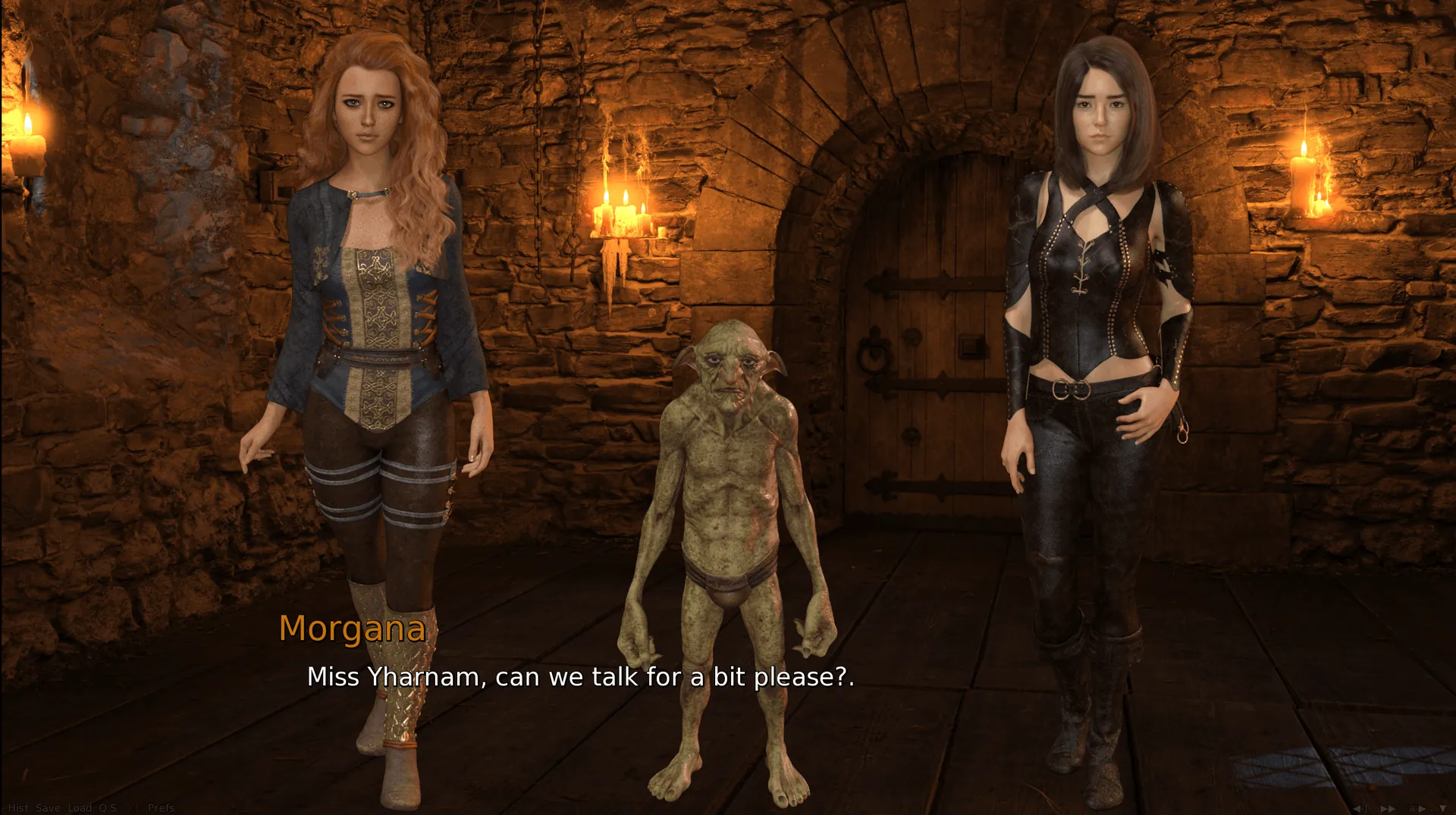
Annie’s School Days
Play Annie’s School Days
Annie’s School Days review
Explore gameplay mechanics, character stats, and strategic decision-making in this visual novel experience
Annie’s School Days stands out as a unique visual novel experience that combines interactive storytelling with strategic gameplay mechanics. This game challenges conventional narratives by placing players in a position of authority within a school setting, where every decision shapes the unfolding story. With its dynamic stat system, multiple character interactions, and branching storylines, Annie’s School Days offers players an engaging experience that rewards careful planning and strategic thinking. Whether you’re new to visual novels or a seasoned player, understanding the game’s core mechanics and features will enhance your gameplay experience significantly.
Understanding Annie’s School Days: Core Gameplay Mechanics and Features
What Makes Annie’s School Days Unique in Visual Novel Gaming
Let me tell you about the first time I booted up Annie’s School Days 🎮. I was expecting a typical school-life sim, but what I got was something entirely different and utterly captivating. You don’t play as a student; you step into the polished shoes of the newly appointed chairman of an all-girls school. Your mission? To navigate a web of complex relationships and assert your influence through a series of strategic choices. This premise alone sets it apart in the world of visual novels.
The core of the Annie’s School Days gameplay is its masterful blend of traditional visual novel storytelling and deep, interactive systems. It’s not just about reading and making an occasional choice; it’s about actively managing your reputation and the emotional states of those around you. The game’s unconventional storyline is a breath of fresh air, focusing on power dynamics and psychological interplay rather than straightforward romance or friendship routes. This creates a uniquely tense and engaging atmosphere from the very first decision you make.
What truly defines the interactive storytelling mechanics here is consequence. Every dialogue option, every command you give, ripples through the narrative. I remember one playthrough where a seemingly minor decision to publicly reprimand a student early on completely altered her willingness to interact with me much later. This level of cause-and-effect is what makes the Annie’s School Days experience so memorable and distinct from more passive visual novels. It’s a game that demands your attention and rewards your strategic thinking. 🤔
Dynamic Character Stat System: Shame, Submission, and Lust
If you want to master Annie’s School Days gameplay, you need to become best friends with its three core pillars: Shame, Submission, and Lust. This isn’t a simple “like/dislike” meter; it’s a sophisticated stat management system that directly governs how every character perceives you and reacts to your actions. Think of these visual novel character stats as the emotional landscape of the entire school, and you’re the gardener trying to shape it to your will.
During my first few hours, I treated these stats as simple numbers to be maxed out. Big mistake! 🚫 I quickly learned that each girl has her own unique baseline for these stats, meaning a command that might increase Submission for one character could drastically increase Shame for another. This individual stat distribution is what makes each interaction feel personal and requires you to tailor your approach for every single character.
Let’s break down what each stat truly represents and how it influences your journey:
| Stat | Definition & Character Impact | Strategic Implication |
|---|---|---|
| Shame | This measures a character’s sense of humiliation or loss of face. A high Shame stat can make a character withdrawn, resistant, or even hostile. It’s often raised by public reprimands or harsh criticisms. | Be careful with public confrontations. While sometimes necessary to establish dominance, letting Shame spiral out of control can permanently close off narrative paths with that character. |
| Submission | This reflects a character’s willingness to accept your authority and directives. A character with high Submission is more likely to comply with requests and follow orders without question. | Focus on building Submission through firm but fair leadership. This is often the key to unlocking more obedient interactions and progressing certain story branches that require command. |
| Lust | This represents a character’s burgeoning desires and attraction, often tied to the power dynamic. It can open doors to more intimate and daring story options. | This stat must be cultivated carefully through suggestive dialogue and private moments. Raising it too quickly or without a foundation in the other stats can backfire, leading to unpredictable outcomes. |
The brilliance of this stat management system is that these stats are not isolated. They interact with each other in complex ways. For instance, an action that increases Lust might also slightly increase Submission, but could cause a dramatic spike in Shame if not handled delicately. Managing this delicate balance is the heart of the game’s challenge. You’re not just playing a character; you are actively engaging in a deep stat management system that requires foresight and understanding of human psychology. 🧠
Strategic Decision-Making and Story Branching
This is where all your management pays off. The decision-based gameplay in Annie’s School Days is what transforms it from a simple story into a personal saga that you author. There are no “right” or “wrong” choices in a vacuum; there are only choices that lead to consequences, shaping your unique path through the school’s social hierarchy.
The game’s branching narrative paths are incredibly responsive. It’s not just about picking Option A to get Ending A. The game constantly checks the current state of your visual novel character stats at every major story beat. This creates a dynamic where two players can make the exact same dialogue choice but get completely different reactions based on the history of their interactions and the current emotional state of the characters involved.
Let me give you a real example from my own playthrough to illustrate this brilliant consequence system. ✨
Scenario: You find a student, let’s call her Emily, breaking a minor school rule.
Your Choice: “Meet me in my office after classes. We need to discuss your behavior.”
Outcome A (If Emily’s Submission is High, Shame is Low): She nods obediently. “Yes, Chairman. I understand.” Later, in your office, the interaction is calm. You have the option to reinforce her obedience, further increasing Submission, or to gently probe, potentially raising Lust without significant Shame.
Outcome B (If Emily’s Shame is High, Submission is Medium): She flinches and looks down, her face red. “I… I’m sorry.” In the office, she is defensive and tearful. Your options are now limited to either escalating the situation (dramatically increasing Shame, potentially breaking her spirit) or showing unexpected leniency (which could paradoxically lower Shame and build a strange trust).
Outcome C (If Emily’s Lust is Notably High): She smirks slightly instead of looking ashamed. “Of course, Chairman. I look forward to our… private discussion.” The scene in the office immediately takes on a completely different, more charged tone, opening up a new set of dialogue options you wouldn’t see otherwise.
This example shows how the interactive storytelling mechanics are deeply tied to the stat management system. Your decision-based gameplay isn’t just selecting text; it’s applying pressure to a complex system and watching it react.
This intricate web of cause and effect is what fuels the game’s incredible replayability. Achieving a multiple endings visual novel experience isn’t just about a few big choices at the end; it’s about the hundreds of tiny decisions you make along the way, each one nudging your stats and relationships down a different branching narrative paths. I’ve played through four times now, and each journey felt distinctly my own, uncovering new scenes, character depths, and endings I didn’t even know existed. The promise of a multiple endings visual novel is fully realized here, making every playthrough a fresh and compelling experience. 🗺️
Ultimately, mastering Annie’s School Days is about embracing its philosophy: every interaction matters, every stat is a tool, and every ending is a testament to the story you chose to tell. It’s a deep, challenging, and profoundly satisfying example of what decision-based gameplay can achieve.
Annie’s School Days delivers a compelling visual novel experience that rewards strategic thinking and careful decision-making. By understanding the dynamic stat system, investing time in character relationships, and employing advanced gameplay strategies, players can unlock the full depth of what this game offers. The combination of interactive storytelling, meaningful choices, and multiple branching paths creates a replayable experience that keeps players engaged across numerous playthroughs. Whether you’re drawn to the complex character interactions, the challenge of stat management, or the satisfaction of discovering hidden story paths, Annie’s School Days provides a unique gaming experience that stands apart from conventional visual novels. Start your journey today and discover how your choices shape the unfolding narrative.





















